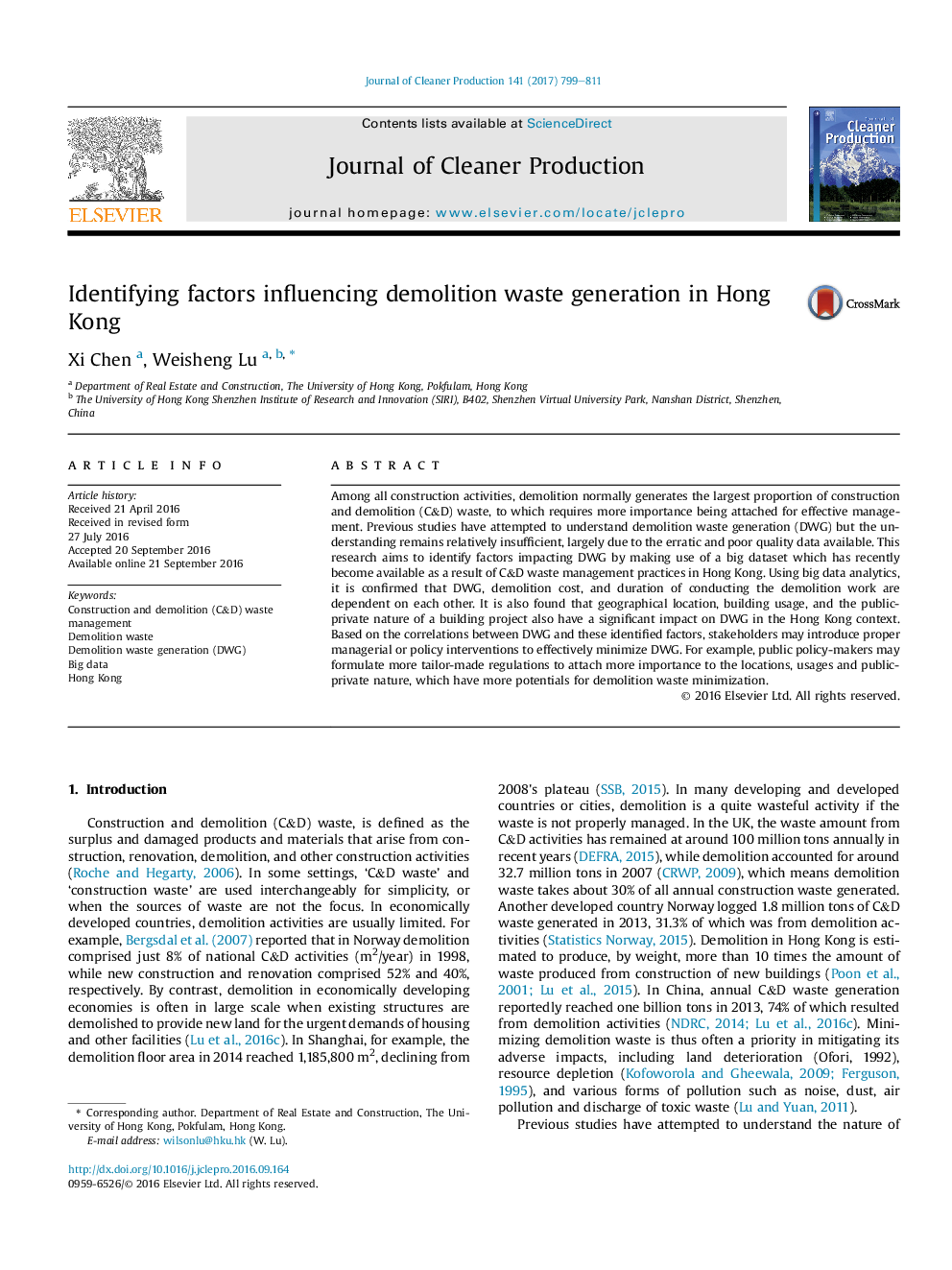| Article ID | Journal | Published Year | Pages | File Type |
|---|---|---|---|---|
| 5481732 | Journal of Cleaner Production | 2017 | 13 Pages |
Abstract
Among all construction activities, demolition normally generates the largest proportion of construction and demolition (C&D) waste, to which requires more importance being attached for effective management. Previous studies have attempted to understand demolition waste generation (DWG) but the understanding remains relatively insufficient, largely due to the erratic and poor quality data available. This research aims to identify factors impacting DWG by making use of a big dataset which has recently become available as a result of C&D waste management practices in Hong Kong. Using big data analytics, it is confirmed that DWG, demolition cost, and duration of conducting the demolition work are dependent on each other. It is also found that geographical location, building usage, and the public-private nature of a building project also have a significant impact on DWG in the Hong Kong context. Based on the correlations between DWG and these identified factors, stakeholders may introduce proper managerial or policy interventions to effectively minimize DWG. For example, public policy-makers may formulate more tailor-made regulations to attach more importance to the locations, usages and public-private nature, which have more potentials for demolition waste minimization.
Keywords
Related Topics
Physical Sciences and Engineering
Energy
Renewable Energy, Sustainability and the Environment
Authors
Xi Chen, Weisheng Lu,
